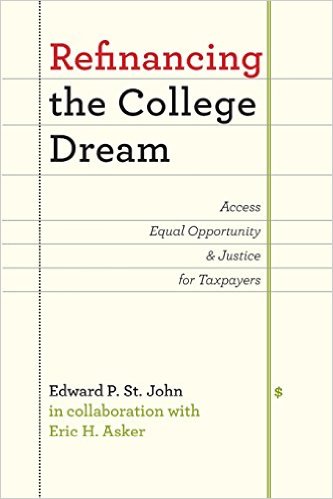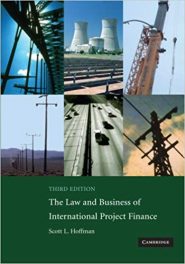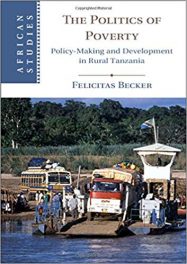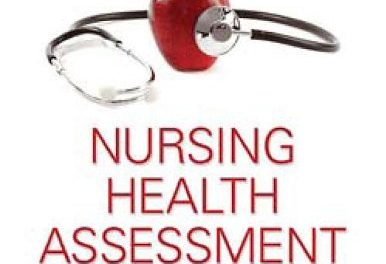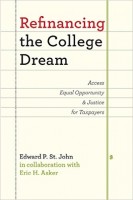 Author: Edward P. St. John, in collaboration with Erik H. Asker
Author: Edward P. St. John, in collaboration with Erik H. Asker
Publisher: Johns Hopkins University Press – 263 pages
Book Review by: Sonu Chandiram
To get some current information and take a glimpse of college-tuition cost trends for this review, we searched Wikipedia articles and other sources. We found out, not surprisingly, that the United States has one of the most expensive higher education systems in the world.
In 2012-13, the annual tuition ranged from $3,131 for public two-year institutions (mainly community colleges) to $29,056 for private four-year universities and colleges. Private colleges increased their tuition by an average 3.9 percent in 2012-13, the smallest rise in four decades, according to data from the National Association of Independent Colleges and Universities. Columbia University’s tuition and fees were the highest, at $51,008, according to a Sept 9, 2014 article in US News and World Report.
Partial financing of public college education by the states has been declining. State support for public colleges and universities has fallen by 26 percent since the 1990s. In 2011, for the first time, institutions of higher learning took in more tuition revenue from their students than they received from the states. It is interesting to know that about 80 percent of American college students attend public institutions.
The author Edward P. St. John points out in the Introduction that as a result of this shift – in the last 20 years or so – in the burden of paying for college from the government to students, equal opportunity for college has eroded for low-income students.
He writes that in the not-too-distant past, public colleges, just as public schools, were funded primarily by the states, providing a low-tuition education for residents. Until the late 1960s, about 80 percent of college educational costs were paid for by the states. By the 1990s that declined to 67 percent, when students and their families’ costs increased to 33 percent, from 20 percent of the costs in the 1960s. By 2011, as we indicate above, states funded less than 50 percent of college costs, as colleges received more tuition revenue from students.
The author presents to us a lot of data, writings by others, and his own knowledge, analysis and insight to make us understand the scope and dimensions of the challenge of college access in Part I of this unique work. And in Part II, he proposes ways of meeting this challenge. We provide below an overview of the historical background and discussion of financial issues relating to the problem of college access.
- Introduction
- Part I: Understanding the Access Challenge
- Finding Justice in Public Finance
- Rethinking Assumptions
- Assessing the Effects of Policy
- The 1970s: Equalizing Educational Opportunity
- The 1980s: Middle-Class Assistance
- The 1990s: Justice for Taxpayers?
- The New Inequality
- Part II: Meeting the Access Challenge
- The Role of Finances
- A Contingency Approach to Refinancing
- Improving Access and Equalizing Opportunity
- Appendix: Trends in Finances and Outcomes, by Erik H. Asker
An important part of this book is chapter 2, Finding Justice in Public Finance, because it relates directly to college affordability. To help students access a college education, the federal government created the Pell grant program in 1972. It was named after Democratic Senator Claiborne Pell of Rhode Island. Here are some major features of this program:
- The college first applies this money towards tuition and fees, then to room and board (if the student lives on campus), then to books and living expenses, and finally to transportation (if the student does not live on campus)
- This grant is portable so a student can use it at any U.S. college, public or private.
- Grantees need to meet certain academic and other qualifications
- The student’s grant could not exceed half the cost of attending a public college
- The student’s grant covered the full cost of attending a higher-cost private college
The author writes this about the Pell grant program: “This single federal program essentially created the opportunity for the poorest in society to send their children to college if they were academically qualified.”
But as the average cost of attending college has been rising, the purchasing power of Pell grants has been declining, as discussed in The Decline in Pell Grants in this chapter. A chart shows that in the 1975-76 period, the maximum Pell award was $4,048 in 1997-98 dollars. This amount covered 85 percent of the average cost of attending college which was $4,769 in 1975-76.
But about a quarter century later in the 1999-2000 period, the purchasing power of that $4,048 had shrunk by about a quarter to $2,985 due to inflation. At the same time, the average cost of attending college had risen to $7723. So the $2,985 (inflation-adjusted) Pell grant covered only 39 percent of the $7,723 college cost in 1999-2000.
Looking at the history of funding for the Pell program, we found on Wikipedia that it was nearly $41.7 billion in fiscal year 2011. That amount drastically dropped in 2010 to almost just half at around $22 billion, and to $19.4 billion in 2009. But the amount available in 2013 had been increased substantially to about $35.7 billion. All this up-and-down movement just does not make sense to the average person. Why the federal government does not fund programs in any consistent manner is probably due to political horse-trading, to the detriment of taxpayers.
This is a thoroughly researched work, with a lot of substantiation for the points made in it. For anyone who wants to learn the details of how the state and federal governments assist students and their families finance a college education, this is the book to read.
Author:
Edward P. St. John is the Algo D. Henderson Professor in the School of Education, at the University of Michigan. He is a Fellow of the American Educational Research Association and recipient of awards from other associations for his scholarship on education and social justice.

